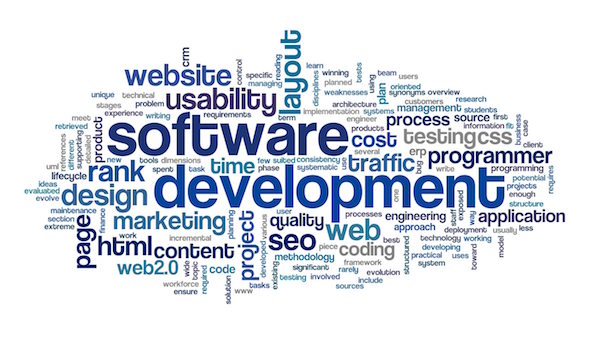There are several unique development methodologies for software engineers to consider. Methodologies act as the framework for the programs being operated, as well as to plan, control, and add structure to the entire development process.
That being said, a reliable software methodology is integral to your program development process. Each development option provides its own unique set of advantages to engineers like yourself. However, with so many options available, it can be difficult to choose which to are most valuable to program completion. If you need to choose a software for your projects, read this post on the popular software development methodologies to consider.
Waterfall

Firstly, the waterfall model is a popular software development methodology to consider. This method was created with the intention of alleviating typical software development issues. Developers using this model work in a linear flow. The progression of a project relies on the completion of each development task. Development teams choose the waterfall model because it reduces the complexity of programming. Waterfall is divided into multiple self-contained stages. These steps guide you through the process to analyze your project scope, assess your requirements, then develop, implement, test, launch, and eventually maintain your completed programs. This leads this to be an excellent options amongst large development teams. Waterfall makes it easy to divide and assign specific tasks against members of your team. Keep this in mind when considering this popular, traditional software development model for your next project.
DevOps
Another popular software development methodology to consider for your next project is DevOps. DevOps supports various forms of organizational cultures and structures through a diverse set of practices. This model focuses on increasing collaboration between departments that impact software development. When executed properly, this collaboration leads to improved time to market. It can also lower the failure rate of new releases, minimize disruption and maximize reliability. Teams leverage several DevOps technologies like containers to accomplish these goals. With containers and integrations, you can share your software images with other departments. Consider this popular software development methodology for your next project.
Agile
Moreover, consider utilizing the agile software development methodology. This development model focuses primarily on accommodating change. It also keys in on the need to complete software development projects at much faster rates. Rather than using a well-thought-out plan, the agile model encourages developers to respond to change as it occurs. Using this approach allow you to develop software in sprints. A sprint consists of a defined duration and a list of deliverables. It is important to note that you do not need to follow any particular order when developing in sprints. With this mindset, developers can learn how to handle complex problems quickly. Original agile methodology was created in response to frustrations with traditional Waterfall programs. Agile is another program that greatly supports team collaboration. Software that focuses on the strengths of your team eventually improves efficiency and boosts customer satisfaction. To assist in project completion, many professional software developers prefer agile methodologies.
Dynamic
Many software development teams also use the software development methodology known as the dynamic systems model. This methodology focuses on a strict time frame and an assigned budget. When using this model, a developer’s main goal is to complete a project in a specific amount of time without overspending. The key to successfully using this methodology is to constantly communicate with your development team. Continuously give your co-workers feedback and accept theirs in return. That way, you can ensure that you stay on the same page to meet your time and budget goals. Consider this popular software development methodology if time and capital are both primary concerns for your team.
Prototype
Finally, several professional development teams prefer to use the prototype methodology. As the name suggests, this model involves creating a prototype. Once your development team builds a prototype, show it off to your client. Demonstrate the functions that you have developed and welcome feedback. Afterward, use the responses that you received to improve the program so that it meets your client’s needs. This popular software development model is ideal for development teams that want to ensure perfection before spending time and capital on a software project. The best prototype programs provide a number of software testing methods. Consider it for your next project if these benefits match your team’s goals.
In order to optimize your software development process, you need to select the right methodology. One of the most popular methodologies to consider is the waterfall model. Many modern development teams are also utilizing the DevOps methodology as it encourages collaboration among departments. Moreover, several teams are applying the agile methodology to complete projects more efficiently. The dynamic software development model is ideal for teams that want to watch their time and money. Furthermore, the prototype model entails creating a prototype before fully executing a client project. Consider these popular software development methodologies for your next project.



